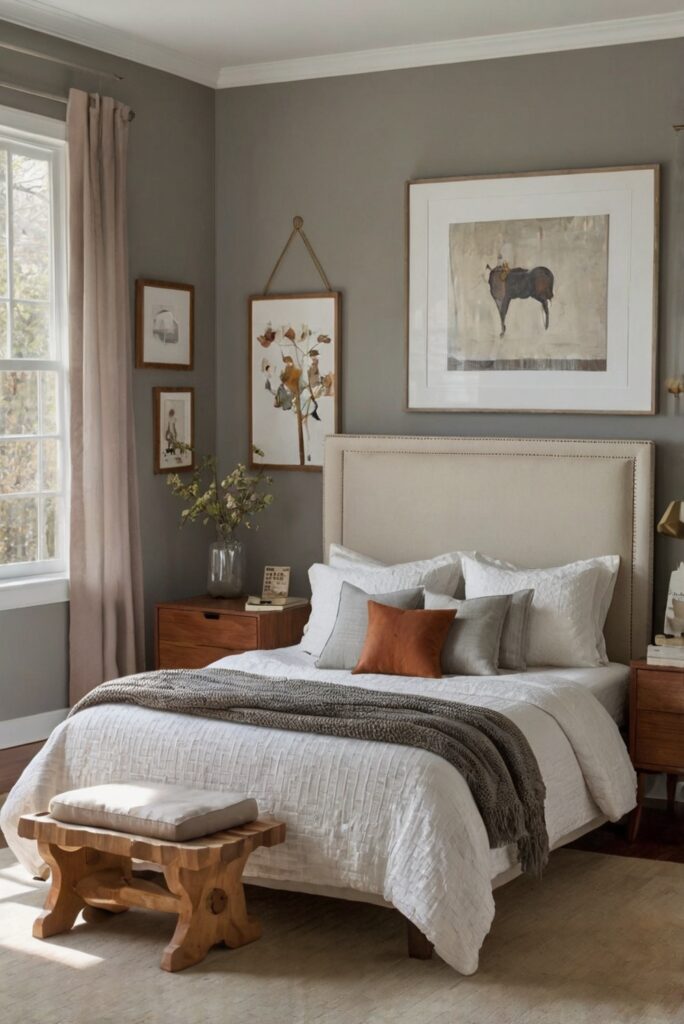In this daily routine, interior designers share expert tips on using paint to make a small bedroom feel larger. Discover creative decor solutions for maximizing space!
How to Use Paint to Make a Small Bedroom Feel Larger?
How to Use Paint to Make a Small Bedroom Feel Larger?
To make your small bedroom feel larger through paint, consider using light and neutral colors like whites, creams, or light grays for the walls. These colors create a sense of space and brightness in the room. You can also paint the ceiling a lighter color than the walls to make it seem higher. Using a single color throughout the room can help create a cohesive and open look. Additionally, avoid dark or bold colors that may make the room feel more cramped. Proper lighting and strategically placed mirrors can also enhance the illusion of space in a small bedroom.
Choose Light Colors:
When it comes to making a small bedroom feel larger, the color of the paint plays a crucial role. Opting for light colors such as soft whites, pastels, or light neutrals can help create a sense of spaciousness. Light colors reflect natural light, making the room feel brighter and more open. They also have a way of visually expanding the walls, giving the illusion of a larger space.
Paint the Ceiling:
To further enhance the feeling of height and space in a small bedroom, consider painting the ceiling in a lighter shade than the walls. This technique draws the eye upward and creates the impression of a higher ceiling, making the room feel more expansive. It is a simple yet effective way to open up the space and make it feel airier.
Use Monochromatic Color Scheme:
Another useful trick to make a small bedroom appear larger is to stick to a monochromatic color scheme. By choosing different shades of the same color for the walls, ceiling, and trim, you create a cohesive look that blurs the boundaries between surfaces. This seamless transition between elements tricks the eye into perceiving a continuous space, making the room feel more spacious.
Consider Light Reflective Paint:
When selecting paint for a small bedroom, opt for light reflective finishes such as satin or semi-gloss. These sheens bounce light around the room, creating a luminous effect that contributes to the feeling of openness. Light reflective paint also makes the walls easier to clean, which is a practical consideration for maintaining a fresh and bright space.
Experiment with Accent Walls:
While light colors are generally recommended for small bedrooms, you can still incorporate a pop of color with an accent wall. Choose a lighter shade of your favorite color and paint just one wall to create a focal point in the room. This strategic use of color adds visual interest without overwhelming the space, allowing you to personalize the room while maintaining a sense of openness.
When it comes to using paint to make a small bedroom feel larger, the key is to create a cohesive and harmonious color palette that maximizes natural light and visual continuity. By following these tips and tricks, you can transform your compact bedroom into a spacious retreat that feels light, airy, and inviting.
1. How can paint colors make a small bedroom feel larger?
Choosing light and neutral paint colors can help create a sense of openness in a small bedroom. Colors like white, cream, soft gray, or pastel shades can make the room feel brighter and more spacious. Dark colors tend to absorb light and make a space feel smaller, so it’s best to avoid them in a small bedroom.
2. What are some paint techniques to make a small bedroom appear larger?
Using a monochromatic color scheme can visually expand a small bedroom. Painting the walls, ceiling, and trim in the same color can create a seamless look that makes the space feel more open. Another technique is to paint the ceiling a lighter shade than the walls to give the illusion of height and airiness.
3. How can accent walls be used to enhance the perceived size of a small bedroom?
Creating an accent wall with a light or bright color can draw the eye and make the room feel larger. Choose a wall that is the focal point of the room, like the one behind the bed or a wall with interesting architectural features. By painting this wall in a contrasting color, you can add depth and visual interest without overwhelming the space.
4. What paint finishes work best for making a small bedroom feel larger?
Choosing a paint finish that reflects light, such as satin or semi-gloss, can help brighten up a small bedroom. These finishes have a subtle sheen that bounces light around the room, making it feel more open and airy. Matte finishes, on the other hand, can absorb light and make a space feel darker and smaller, so they are not ideal for small bedrooms.
5. Are there any additional tips for using paint to make a small bedroom feel larger?
In addition to choosing the right paint colors and finishes, consider painting the trim and doors the same color as the walls to create a seamless look that visually expands the space. Using mirrors strategically to reflect light and create the illusion of more space can also enhance the effect of the paint colors. Additionally, keeping the room clutter-free and using furniture that is proportionate to the size of the room can help maintain the sense of openness created by the paint choices.



